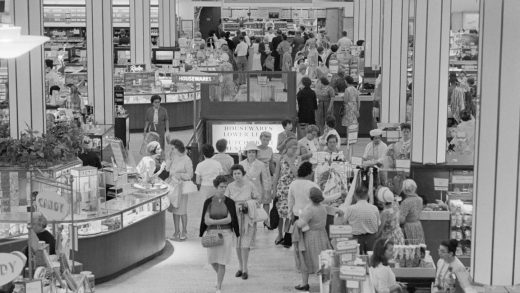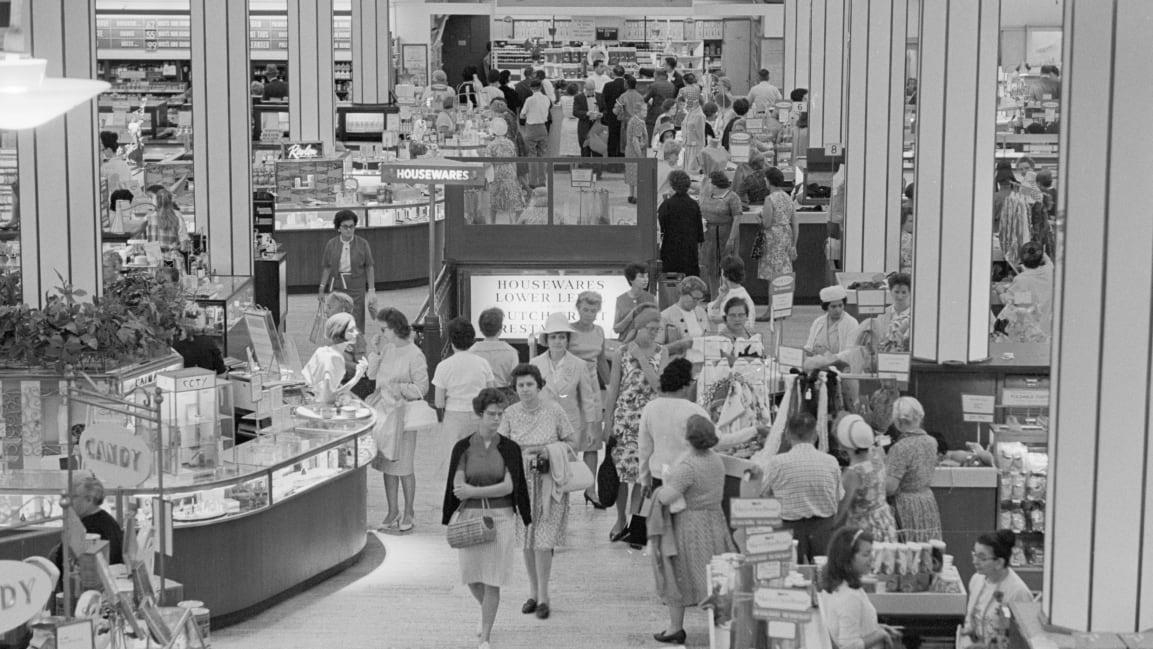Department stores were the original retail startups. Now they’re headed for the grave
After a century and a half, the American department store appears to be headed toward the grave. These glittering emporia that once drew crowds with fashion shows, concerts, and lavish holiday windows are going out with whimper, not a bang—an apparent victim of the economic fallout of the coronavirus pandemic.
Department stores had been in declining health for a decade, as they became less relevant in the landscape of American life. There was a time when consumers had to visit these stores to find the latest clothes, shoes, accessories, and home goods from must-know brands, but with the internet, consumers could buy these products from the comfort of their sofas. In a sign of how troubled the industry was, both Barneys and Henri Bendel’s went out of business in 2019. That was before the coronavirus arrived in the United States.
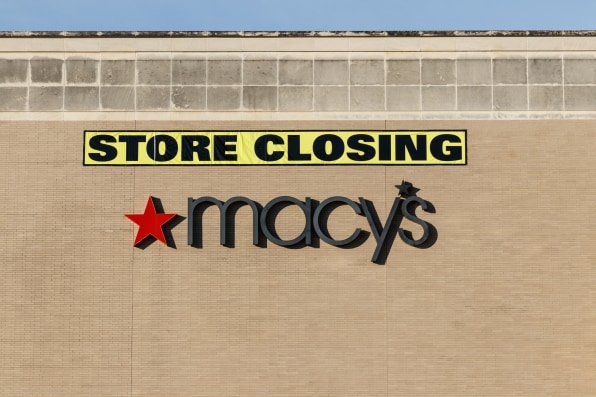
“Yes, department stores have faced troubles in the past, from rationing in the war years to a lack of purchasing power during the Great Depression,” says Vicki Howard, a historian and the author of From Main Street to Mall: The Rise and Fall of the Department Store. “But they’re entering this new crisis in a very weak state, and that could make the outcome worse for them this time around.” In mid-March 2020, department stores were classified as nonessential businesses and forced to shutter in an effort to curb the spread of the disease. This may be the final blow for Neiman Marcus, which is currently contemplating bankruptcy or a fire sale. Analysts at Cowen say that Macy’s, Kohl’s, and J.C. Penney will only be able to withstand a few months of store closures before running out of cash and ending up in the same boat. Nordstrom may have about a year. “These brands are so powerful that they are likely to live on in the wake of COVID-19,” says Howard. “But the department store, as a business model, appears to be at the end of its life.” Their demise hints at an important, if familiar, lesson as retailers consider their future amid rampant uncertainty: innovate or die.
Glitz and glamour
Until the mid-1800s, the best shopping experience a person could buy in the United States was at a “general store,” which sold a wide range of products, from fabric to kitchen supplies. These were the original retailers that didn’t necessarily make products, but curated and sold goods from other merchants, taking a cut of the sale. “These were one-stop shops,” says Chris Calott, an architect and professor of architecture at UC Berkeley. “They offered customers the convenience of not having to go to specialized merchants.”
As money began to flow into major cities across the country, entrepreneurs elevated this concept with stores that curated high-end specialty merchandise. Howard says that department stores began in cities and encapsulated the sophistication and wealth that was emerging in these hubs. “They became ubiquitous urban institutions,” Howard says. “If you lived in a rural area, you would have to travel to a market town, or you’d order products using their mail order catalog.”
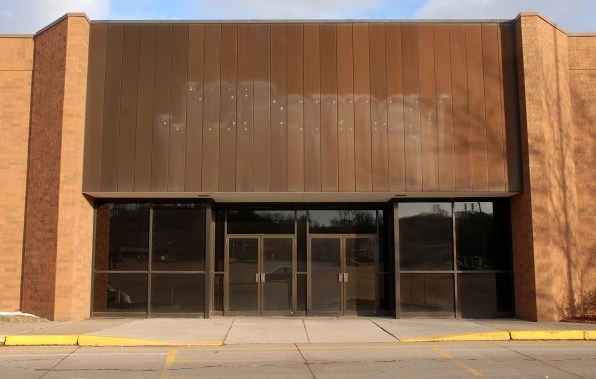
Both Macy’s and Lord & Taylor began as small dry goods stores, but in 1858 and 1859 respectively, they opened swanky new stores in Manhattan. In 1875, John Wanamaker launched an eponymous store in Philadelphia, which was quickly followed by Marshall Field’s in Chicago. All of these were modeled on elegant department stores that had popped up in Europe decades before, like Harvey Nichols in London and Bon Marché in Paris. Part of the appeal was that they offered a luxurious experience, with stunning architecture, well-appointed fixtures, and plenty of assistants on hand to help customers.
These early department stores were incredibly innovative. Founders worked hard to make shopping easy and exciting for customers: Wanamaker, for instance, invented the price tag and the return policy. Since department stores purchased merchandise from designers and merchants, they had an incentive to advertise these goods so customers would buy them and they wouldn’t be stuck with so much excess inventory. As a result, department stores got extremely creative with marketing products. They created stunning window displays that artistically showcased products. They staged the very first fashion shows, which became the precursor to the fashion weeks we now have around the world.
Thus began the golden age of retail. Throughout the early 1900s, Americans flocked to these stores to spend their money which, in turn, allowed department stores to invest in more lavish and entertaining in-store experiences. Henri Bendel packaged products in luxurious brown and white striped boxes and became the first American retailer to sell outfits designed by Coco Chanel. In 1914, Lord & Taylor unveiled its Fifth Avenue store, built in the Italian Renaissance style, complete with copper cornices, a limestone palazzo, and a concert hall.
Sure, there were some difficult moments. There was rationing of raw materials during the war years that led to fewer products in stores and a dearth of consumer spending during the Great Depression. But Howard says that the industry was able to bounce back through this period by being creative. “They brought in circus acts and entertainers to drive foot traffic,” she says. “They were able to do things they simply can’t do in this current crisis, since the stores are physically closed.”
The mall chains
After World War II, as Americans bought cars and moved into the suburbs, department stores went with them. In the 1960s, developers began creating enormous shopping complexes away from major cities and invited chains like Macy’s, Sears, and Lord & Taylor to become anchor tenants. “Architects wanted to create a town center for fast-growing suburban areas,” says Calott.
There were many reasons for this shift, including a boom in cheap real estate, but there were also darker explanations. “There was a racist component to this,” Howard says. “Cities were increasingly seen as African American. Businesses chose to chase the white market that had fled to the suburbs.”
In some ways, it’s possible to trace the decline of the department store to this expansion into malls. Howard says that mall chains took business away from the original downtown stores, forcing many of them to close. Department store chains developed infrastructure to standardize their mall locations and had warehouses that held massive volumes of inventory, which were shipped across the country. The store fixtures were identical. “They discovered that this kind of centralized organizational structure allowed them to have bigger margins,” she explains. “Mall chains were big business.”
For decades—well into the early 2000s—this strategy worked well. Suburbanites had access to all the same brands that could be found in bigger cities, and many department stores also began offering cheaper products that met the needs of middle-class customers. Cookie-cutter malls weren’t as luxurious as the original department stores, but they could be fun places, with movie theaters, restaurants, and arcades.
But over time, department store mall chains didn’t do enough to evolve in response to changing trends. Many chains had enormous, long-term leases; they didn’t do much to update their stores after opening nor did they invest in creating unique in-store experiences. Buyers at department stores placed enormous orders for products that would be sold across the entire network of stores. This was cost-effective, but it meant they couldn’t take risks on buying interesting pieces that reflected a distinct point of view, so products sold in these stores often felt generic and unoriginal. And at the end of the season, they had to offload a lot of unsold inventory by discounting them, but over time, consumers began to expect these discounts, which forced brands into a race to the bottom for pricing. High-end department stores started to lose their luster.
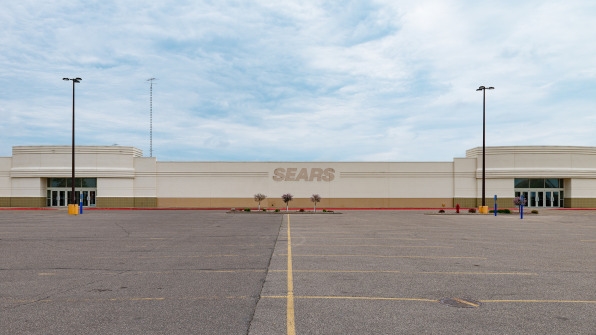
Most damningly, department stores were slow to adapt to age of e-commerce and social media. When they did eventually launch an online presence, many failed to invest in creating an exciting, easy-to-navigate user experience. These once-glamorous retailers had become dull, sleepy, and generic; meanwhile, online brands were working hard to capture the consumers’ attention. “These large, federated brands didn’t have much to offer the modern customer,” Howard says.
But here’s the thing: It’s clear that before the coronavirus crisis hit, consumers still enjoyed the experience of visiting a store. And some department store chains tried to evolve their formats. Nordstrom, for instance, has experimented with localized, small-format stores. And it is currently in the strongest financial position compared to its peers, according to Cowen. (But according to the New York Times, even Nordstrom is struggling: It is currently canceling orders and putting off paying its vendors.)
Calott, the architect, says that the most successful malls in recent decades have been outdoor ones like Santana Row in San Jose and the newly developed Seaport District in Boston. Both mix together smaller stores with residential and office spaces. But many department stores chains were resistant to shrinking their stores to fit into them.
So where does that leave department stores today? Howard believes that these household names may live on, but in an entirely different format. Brands like Neiman Marcus or Nordstrom may become online-only retailers, for instance. Or they might become something else entirely. Lord & Taylor was recently acquired by Le Tote, a fashion subscription box business. But one thing’s for sure: The age of the enormous, gilded building is over. Consider what has happened to Lord & Taylor’s iconic buildings: They’ve recently been acquired by Amazon and WeWork.
(36)

